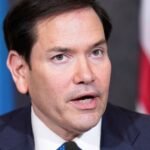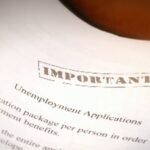Car dealerships see thinner lots as auto tariffs sink in
Auto dealers, squeezed by President Donald Trump’s tariffs on the industry, are already seeing a tighter supply of vehicles to offer buyers at a time when sticker prices for many models are set to climb.
Pine Belt Subaru in Lakewood, New Jersey, normally receives 100 to 120 cars a month. This month the dealership received just 18, meaning the lot will be thin heading into the typically busy season of May through August.
“We need inventory. We need to fill our shelves with vehicles,” said Dan Ariel, director of the Pine Belt Auto Group. “If the factory is not giving us vehicles right now, it’s definitely a concern.”
That means customers looking for a specific car in a specific color may have difficulty finding it as automakers tighten the spigots on deliveries. Ariel said consumers rushed to the showroom following Trump’s late March announcement of 25% tariffs on imported vehicles, in some cases citing inventory concerns as a reason for the urgency.

On May 3, the administration piled on another layer of import taxes, this time on auto parts. Companies now have to pay 25% more to import parts from abroad as well, although the White House made last-minute changes to avoid those added costs “stacking” on top of other tariffs, like those on steel and aluminum. The administration is also temporarily offering automakers reimbursements for some tariffs, of up to 3.75% of the value of a U.S.-made car for a year.
“It gave them a chance to be able to build their car parts factories,” Trump said in the Oval Office during a meeting on Tuesday with Canadian Prime Minister Mark Carney.
But vehicle shipments are already tightening. Dealers in April had only enough new cars on their lots to last them about 60 days, according to Cox Automotive, down from an average supply of 80 to 85 days last year.
While that’s not nearly as bad as the shortages seen in 2022, when global supply-chain snags throttled inventory levels to fewer than 40 days, Cox senior director Erin Keating said vehicle stocks still look “depleted.” That’s partly due to consumers buying ahead of the tariffs and partly because many automakers are reducing or pausing their shipments to dealers while they strategize over production volumes and pricing.
We need inventory. We need to fill our shelves with vehicles.
Dan Ariel, director, Pine Belt Auto Group, Lakewood, N.J.
Many vehicle manufacturers are “holding them at the borders before they’re going on and allocating those to dealers,” Keating said.
The uncertainty has clouded the major automakers’ guidance to Wall Street, as General Motors last week lowered its financial projections for the year, while Ford on Monday declined to provide any forecast at all. GM is estimating a tariff hit of as much as $5 billion, while Ford says it could be impacted by as much as $2.5 billion.
As automakers now pay 25% more to bring finished cars into the U.S., the game of chicken has begun over when to start passing on some or all of the costs to consumers in the form of a higher “manufacturer’s suggested retail price” (MSRP). That would lift the floor for pricing that auto dealers use when selling to prospective car buyers.
“We hope the manufacturers won’t increase prices. If they don’t increase, it’s business as usual,” Ariel said last week, adding that he hasn’t raised prices on his lots yet. Still, he warned, “If the manufacturers decide to tack on the tariffs to the prices, naturally we have to pass it onto the consumers.”
Even with Trump’s latest revisions to his auto tariffs, prices could still rise on new vehicles by as much as $12,000, the Anderson Economic Group consulting firm estimates.
For now, though, many automakers appear to be treading cautiously. Stellantis and Ford both said they would offer employee pricing on some of their vehicles through at least June, and Hyundai committed to not increasing prices at least through early June.
Industrywide, automakers appear to be holding off on adjusting their MSRPs, Keating said, but that could change if the perfect storm of low inventory, high demand from consumers and increased manufacturing costs due to tariffs arrives.
“I think that we’re not going to see astronomical increases in prices quickly, unless we start seeing more supply and demand dynamics that are just Econ 101: less supply, more demand,” she said.
At Pine Belt Subaru, Karyn Wejnert of Point Pleasant, New Jersey, drove off the lot with a brand new Subaru Forester on Friday — hours before the auto parts tariffs took effect.
“I knew that waiting wouldn’t work. I know that things are going to get higher for a while. I know that,” she said.
You may be interested

WNBA All-Star Game 2025: Caitlin Clark wants to get technical foul
new admin - Jul 20, 2025[ad_1] NEWYou can now listen to Fox News articles! Caitlin Clark may be unable to play in the WNBA All-Star…

WNBA All-Star Game 2025: Players send message to league
new admin - Jul 20, 2025[ad_1] NEWYou can now listen to Fox News articles! WNBA stars fired off a message to the league before the…

7/19: CBS Weekend News – CBS News
new admin - Jul 20, 20257/19: CBS Weekend News - CBS News Watch CBS News Driver crashes into line of people in L.A., police say…
































